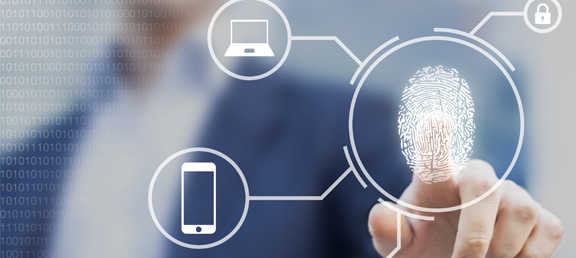Identity verification in a digital age -- Expand your view to include more consumers, and their devices
Practically everything’s digital these days, which can be both good and bad when you’re performing identity verification while activating a new account. The convenience can be game-changing, since most, if not all, of the process can be automated. However, if you’re lacking in data, meaning you don’t have enough or you’re using the wrong mix of data, even the most high-tech process can cause account activation delays, or worse, open the door to fraud. Simply put, in today’s digital age data is critical to accurately verifying the identity of your customers and their devices. It can help you quickly recognize, validate, and confidently serve a wider audience across a variety of channels so that you can securely grow and protect your business. Here are a few data-driven ideas to help optimize your identity verification processes.
Verify more identities with specialized data
Identity verification is often rooted in traditional forms of consumer data, such as credit. Within certain traditional credit report information, you can find key identifiers—things like names, aliases, Social Security number, date of birth, and address history, which can be compared against the data provided by an applicant to help verify an identity.
But, what about applicants who lack credit? Research shows that up to 26 million adults do not have a credit file on record at the top three nationwide credit reporting agencies. For these consumers, a verification process driven by traditional credit simply may not be ideal.
This is when alternative data—a type of account payment data that is generally not reported to the credit bureaus—can be helpful. In fact, specialized, industry-focused alternative data is available today that can reveal account payment details from within the utility, cable and communications service provider sectors. Since the vast majority of U.S. consumers have these basic services, the data coverage is extensive. In addition to account payment information, the data can also include public records data, address history and other identifying details.
Pairing this type of alternative data with certain traditional credit data can dramatically expand your visibility into millions of previously unidentified consumers, so you can verify and serve a much wider audience of applicants.
Strengthen online and mobile verification without adding friction
Within the online and mobile environments, you need an added layer of verification to support point-of-sale transactions. But, asking customers to complete additional authentication questions—often on a small tablet or smartphone screen—creates friction.
To address this issue, it’s possible to apply specialized data and technology to help reduce the number of required authentication questions from multiple screens of data entry down to a few short questions. Using a few key identifiers with customer consent, you can then automatically pull in additional identifiable consumer information, such as name, address, phone, email and other information to help validate customer identities and auto-fill the fields required to set up a new account.
Device verification is also something that can be seamlessly addressed behind the scenes. For instance, with consumer consent, it’s possible to use the built-in GPS (Global Positioning System) to identify the location of an applicant’s computer or mobile device. This data can also help you detect if the device is connected to a Wi-Fi network, what IP address it’s using and whether the device has been associated with fraud in the past.
In each case, generally, everything can happen automatically in a matter of seconds. The customer experiences a smooth, consistent account set-up process that requires minimal effort on their part, no matter which channel they’re using. Meanwhile, you’re able to quickly and efficiently verify identity from a much more robust view of the consumer, without compromising fraud and security risk.
Looking ahead, one thing is certain: the data and technologies used for identity verification are changing and will continue to evolve. To help ensure your organization can quickly, securely and consistently serve a larger audience of customers with an optimized identity verification process, it’s important to take the time to regularly re-evaluate your verification strategy and consider the latest industry resources. For more ways to strengthen your identity verification process, click here to visit the resource center for communications, energy and digital media service providers.
Click here to watch a quick video about the specialized alternative data available exclusively to communications, energy and digital media providers.

